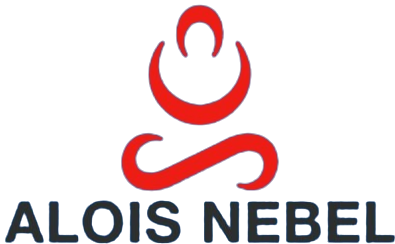If you’ve ever joked about giving up your daily flat white to afford a flat of your own, you’re not alone. For Singaporean millennials, the struggle between living in the now and planning for the future feels sharper than ever. Housing prices remain sky-high, inflation makes daily life more expensive, and the pressure to enjoy an “Instagram-worthy” lifestyle is real.
But here’s the truth: achieving financial freedom doesn’t have to mean cutting out every small pleasure. Instead, it’s about being smart with your money, making choices that fit your values, and setting up a system where your finances work for you—not the other way around.
Here’s how millennials in Singapore can save without losing their flat whites—or their sanity.
1. Start With Awareness, Not Guilt
Millennials often get accused of being careless spenders, with headlines blaming avocado toast or bubble tea for their lack of savings. But the reality is more complex. Housing, transport, and education costs have risen far faster than wages, making it harder for young adults to build wealth compared to previous generations.
The first step isn’t guilt—it’s awareness. Track where your money is going. Use apps like Seedly, MoneyOwl, or even your bank’s expense tracker to categorise spending. Once you see the numbers, you’ll know what’s lifestyle fluff versus actual necessities.
Maybe it’s not the occasional $6 flat white that’s the issue, but $400 on ride-hailing every month or the sneaky late-night online shopping spree. Awareness means you can cut back where it matters instead of giving up everything that makes life enjoyable.
2. Define What Financial Freedom Means to You
Financial freedom isn’t one-size-fits-all. For some, it’s owning a fully paid-off HDB flat by 40. For others, it’s the ability to take a six-month sabbatical without stressing about bills. Some might even define it as being debt-free while still enjoying yearly travel.
Take the time to define what freedom means to you. Write down three goals:
- Short-term (like building a $10,000 emergency fund).
- Medium-term (saving for a wedding or BTO down payment).
- Long-term (retiring early, or hitting Coast FIRE).
Once you have clarity, saving becomes purposeful. Suddenly, saying “no” to one extra shopping spree feels like saying “yes” to your Bali trip fund or future home.
3. Automate Your Savings
Saving is easiest when it happens without effort. Set up automatic transfers so a portion of your salary flows straight into savings or investment accounts the moment you’re paid.
A useful rule of thumb is the 50/30/20 framework:
- 50% for needs (rent, bills, groceries, transport).
- 30% for wants (dining out, holidays, concerts).
- 20% for savings and investments.
If 20% feels too ambitious, start with 10% and build up. The key isn’t perfection—it’s consistency. Over time, small amounts snowball into meaningful sums.
Think of it as paying yourself first, before anyone else.
4. Make the Most of CPF and SRS
For many millennials, CPF feels more like a black hole than a benefit. But it’s actually one of the most powerful savings tools you have. Your CPF contributions are already working for your retirement, but you can boost them further:
- Top up your Special Account (SA): You’ll enjoy higher guaranteed interest.
- Use the Supplementary Retirement Scheme (SRS): This gives you tax relief while helping you save more for retirement.
CPF and SRS might not be glamorous compared to stocks or crypto, but they’re stable, reliable, and designed to support long-term security. They’re the “boring but effective” part of your financial toolkit—future you will be very grateful.
5. Build an Emergency Fund Before Anything Else
Unexpected things happen—retrenchments, sudden medical expenses, or even a broken laptop that you can’t live without for work. Without a cushion, you may end up dipping into investments or racking up debt on credit cards.
Aim to save three to six months of expenses in a high-yield savings account or cash management account. That way, if life throws a curveball, you’ll have the breathing space to recover without derailing your financial goals.
6. Invest Early, Even If It’s Small
Many people think investing requires big sums or advanced knowledge. The truth? The earlier you start—even with small amounts—the easier your future becomes.
Let’s do the maths: if you invest $500 monthly in a diversified fund growing at 6% annually, in 30 years you’d have close to half a million dollars. That’s the magic of compounding.
Beginner-friendly options include:
- Robo-advisors like Syfe, StashAway, or Endowus for a hands-off approach.
- Regular savings plans through banks or brokerages.
- ETF investments for diversified, low-cost exposure.
Even investing $100 monthly is better than waiting until you “feel ready.” Time in the market matters more than timing the market.
7. Lifestyle Hacks That Don’t Feel Like Sacrifices
Saving isn’t about deprivation—it’s about making smarter choices. Here are hacks that fit a millennial lifestyle:
- Café hopping with balance: If café culture is your joy, keep it. Just balance it by brewing lattes at home. A decent machine can save hundreds a year.
- Travel hacks: Use credit card miles, book off-peak, and try budget airlines for short trips. Wanderlust is still possible without overspending.
- Meal planning: Cooking two or three times weekly saves hundreds monthly, yet still leaves room for foodie adventures.
- Subscriptions audit: Do you really need Netflix, Disney+, Spotify, YouTube Premium, and Apple TV? Cutting one or two frees up $20–30 monthly.
The goal isn’t to strip away enjoyment, but to make every dollar stretch further.
8. Side Hustles: More Than Extra Income
Side hustles are becoming a norm in Singapore—from tutoring and freelance design to selling handmade crafts or running a TikTok channel. Beyond the money, side hustles give millennials autonomy, creativity, and sometimes even a career shift.
An extra $300 a month might not seem huge, but channelled into investments, it compounds into tens of thousands over the years. Choose something sustainable that aligns with your interests—you don’t want your “freedom plan” to burn you out.
9. Normalise Talking About Money
Money is still a taboo topic in many circles, but it doesn’t have to be. Talking openly with friends or family about finances creates accountability and shared learning.
Imagine discussing CPF top-ups or investment apps as casually as you discuss K-drama recommendations. You’ll swap tips, avoid mistakes, and support each other’s goals. Financial literacy grows faster when it’s shared.
10. Remember: It’s a Marathon, Not a Sprint
The path to financial freedom isn’t linear. Some months you’ll save more, others less. You might splurge on a festival ticket, then offset it with cheaper meals the following weeks. That’s fine.
What matters is the long-term trend. If, year after year, your savings and investments are steadily growing, you’re already winning. Progress beats perfection.
And yes, that means you can still enjoy your flat white without guilt—because financial freedom isn’t about cutting out joy, it’s about having the freedom to enjoy life on your terms.
Final Thoughts
Being a millennial in Singapore comes with unique pressures: housing affordability, rising costs, and the constant pull of social media-fuelled lifestyles. But it also comes with unique opportunities: high-interest savings accounts, CPF, access to investment tools, and digital platforms that make money management easier than ever.
So no—you don’t have to give up your coffee, bubble tea, or brunches to buy a home or retire comfortably. You just need a strategy, consistency, and clarity about what truly matters to you.
After all, financial freedom isn’t about living a joyless life of sacrifice. It’s about building a system where your money supports your dreams—whether that’s a flat, a sabbatical, or simply enjoying your next flat white with peace of mind.

